1 of 15
Download to read offline
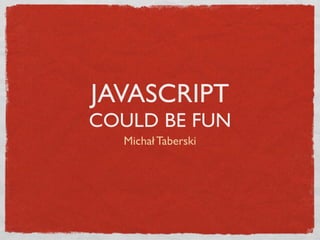


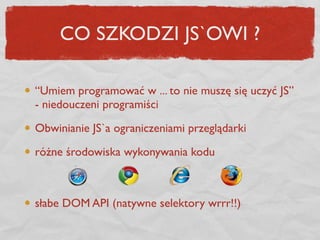
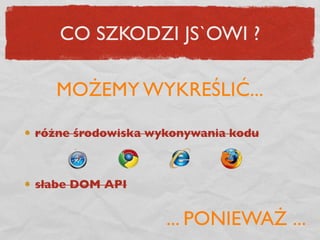
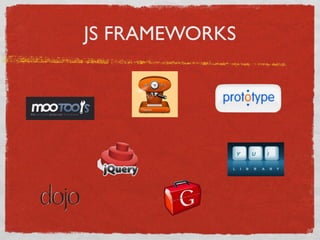

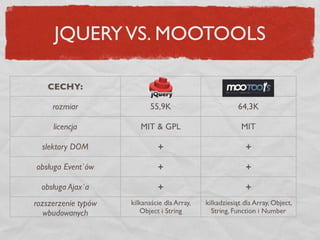
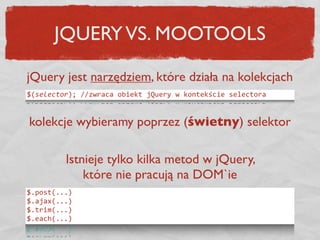
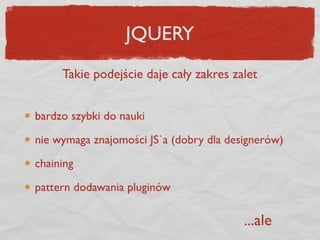
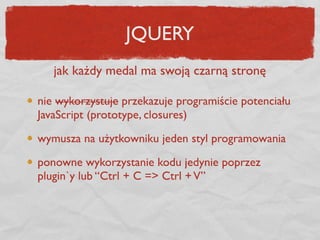
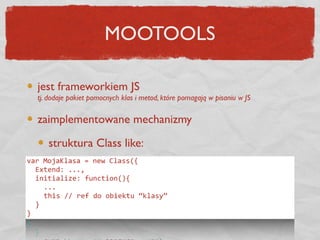

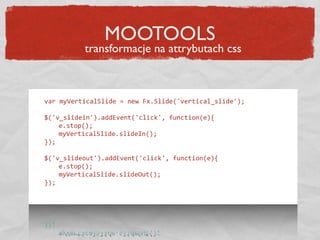
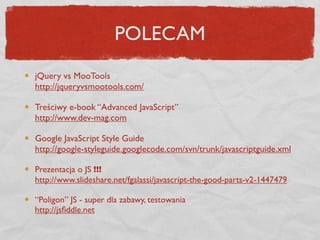
Ad
Recommended
The forgotten people of Balaban
The forgotten people of BalabanOlli Waldhauer
?
Donate 15Ć by buying this book for 20Ć and support the people of Balaban.
We already delivered 2,5t of food, countless diapers, 200 mattresses, 200 blankets and 200 pillows. But the winter is coming and food and warm clothes are urgently needed.
You can simply order your copy by paying 20Ć over Paypal using vibes@nippesyard.com and the subject: 'the forgotten people of Balaban'.
Thanks for your help.
Balaban is a small turkish border village next to Kobane. Due to the Syrian conflict it has become a more and more dangerous place. People have left their homes and moved away from the border area. After the Islamic State started targeting Kobane thousands of kurdish inhabitants have became refugees. Nearly 700 ended up in Balaban far away from the big and safe refugee camps, and far away from any NGOĪ»s help. This book is made to give them a face.Rapid prototyping front end libraries
Rapid prototyping front end librariesMichal Taberski
?
Rapid prototyping front end libraries provide skeleton code for CSS, HTML, and JavaScript that developers can use for common UI elements in a project. Two popular options are Bootstrap and Foundation. Both provide a grid system, styles for forms, buttons, tables and other common patterns. They also include modal windows, image grids, drop down menus and other pre-built components. The main differences are that Bootstrap has a more polished, product-like appearance with transitions while Foundation provides a more raw foundation for customization and extension.Open Source Telephone Systems Made Easy With Plivo
Open Source Telephone Systems Made Easy With Plivoclintonb11
?
The document discusses Plivo, a communication framework that simplifies the development of voice-based applications using existing web development skills. It addresses the limitations of traditional open-source telephony solutions like Asterisk and highlights Plivo's advantages such as control over the telephony stack, scalability, and ease of use. The presentation also covers features, installation, and the future prospects of Plivo's services.Modern web application model
Modern web application modelMichal Taberski
?
This document discusses modern web application models. It notes that popular apps like Gmail and GitHub provide instant responses through asynchronous JavaScript and XML (Ajax) requests. However, default Rails applications do not natively support this and require additional Ajax code. The document then explains how these apps work by serving templates to render views client-side and returning JSON data in response to events. It suggests this could work similarly to an existing Rails app that uses JSON-driven communication. Finally, it asks if it is possible to move the view component of MVC to the client-side in a seamless way.Coffee Script
Coffee ScriptMichal Taberski
?
The document discusses CoffeeScript, a programming language that compiles to JavaScript. It was designed to have cleaner syntax than JavaScript and be easier to read and write. CoffeeScript code compiles directly to equivalent JavaScript code. Using CoffeeScript can help developers write less code that is more readable and maintainable while still being able to use existing JavaScript libraries. The document provides examples of CoffeeScript code and the equivalent JavaScript output. It also discusses how to use CoffeeScript with Ruby on Rails projects by adding the Barista gem.Strengthening Families 101
Strengthening Families 101Center for the Study of Social Policy
?
The document discusses the Strengthening Families approach to child abuse prevention. It focuses on promoting protective factors in families rather than targeting families based on risk factors. The protective factors framework emphasizes parental resilience, social connections, knowledge of parenting and child development, concrete support in times of need, and children's social and emotional competence. The approach aims to strengthen all families through partnerships with organizations already serving families and by integrating the framework into existing systems and policies.Team 3
Team 3shan1388
?
Team 3.
Cross collaboration between University of Massachusetts,Dartmouth and University of KwaZulu-Natal
Team 3
Team 3shan1388
?
Team 3.
Cross collaboration between University of Massachusetts,Dartmouth and University of KwaZulu-Natal
2017
2017Negotiation Bootcamp
?
The 1981 policies of the French government under President Mitterrand included nationalizing banks and industry, increasing spending substantially, and implementing various social reforms like raising minimum wage and family allowances. This led to a tripling of the deficit and 50% increase in the national debt as well as high inflation that required currency devaluations in 1981-1983. French politics has traditionally been dominated by graduates of the elite ENA school and characterized by technocratic rule with reforms decided by a small group rather than power sharing.Results-Based Public Policy Framework
Results-Based Public Policy FrameworkCenter for the Study of Social Policy
?
This document discusses results-based public policy and provides an overview of its key principles and framework. Results-based public policy uses desired outcomes to drive government actions and starts by clearly defining the results wanted, understanding current progress, focusing on policies that work, ensuring success through accountability, and sustaining success through appropriate financing. The 5 questions that form the framework are: 1) What results do you want? 2) How are your kids? 3) What works? 4) How can you ensure success? 5) How can you sustain success? Examples of results and policies that work to achieve family economic success are also provided.CSSP Well-Being Frame
CSSP Well-Being Frame Center for the Study of Social Policy
?
The document outlines the CSSP Child and Family Well-Being Framework. The framework aims to clearly link CSSP's work to achieving improved well-being for children, families, and communities. It defines well-being broadly and identifies population-level results and indicators in six areas: children's health; school readiness; youth success; family support, safety and economic security; and community resources. The framework also outlines factors that influence well-being like opportunities, risks and protections, and the capacities needed across communities, systems and policies to improve results.AI vs Human Writing: Can You Tell the Difference?
AI vs Human Writing: Can You Tell the Difference?Shashi Sathyanarayana, Ph.D
?
This slide illustrates a side-by-side comparison between human-written, AI-written, and ambiguous content. It highlights subtle cues that help readers assess authenticity, raising essential questions about the future of communication, trust, and thought leadership in the age of generative AI.War_And_Cyber_3_Years_Of_Struggle_And_Lessons_For_Global_Security.pdf
War_And_Cyber_3_Years_Of_Struggle_And_Lessons_For_Global_Security.pdfbiswajitbanerjee38
?
Russia is one of the most aggressive nations when it comes to state coordinated cyberattacks?Ī¬?and Ukraine has been at the center of their crosshairs for 3 years. This report, provided the State Service of Special Communications and Information Protection of Ukraine contains an incredible amount of cybersecurity insights, showcasing the coordinated aggressive cyberwarfare campaigns of Russia against Ukraine.
It brings to the forefront that understanding your adversary, especially an aggressive nation state, is important for cyber defense. Knowing their motivations, capabilities, and tactics becomes an advantage when allocating resources for maximum impact.
Intelligence shows Russia is on a cyber rampage, leveraging FSB, SVR, and GRU resources to professionally target UkraineĪ»s critical infrastructures, military, and international diplomacy support efforts.
The number of total incidents against Ukraine, originating from Russia, has steadily increased from 1350 in 2021 to 4315 in 2024, but the number of actual critical incidents has been managed down from a high of 1048 in 2022 to a mere 59 in 2024?Ī¬?showcasing how the rapid detection and response to cyberattacks has been impacted by UkraineĪ»s improved cyber resilience.
Even against a much larger adversary, Ukraine is showcasing outstanding cybersecurity, enabled by strong strategies and sound tactics. There are lessons to learn for any enterprise that could potentially be targeted by aggressive nation states.
Definitely worth the read!Techniques for Automatic Device Identification and Network Assignment.pdf
Techniques for Automatic Device Identification and Network Assignment.pdfPriyanka Aash
?
Techniques for Automatic Device Identification and Network AssignmentPowering Multi-Page Web Applications Using Flow Apps and FME Data Streaming
Powering Multi-Page Web Applications Using Flow Apps and FME Data StreamingSafe Software
?
Unleash the potential of FME Flow to build and deploy advanced multi-page web applications with ease. Discover how Flow Apps and FMEĪ»s data streaming capabilities empower you to create interactive web experiences directly within FME Platform. Without the need for dedicated web-hosting infrastructure, FME enhances both data accessibility and user experience. Join us to explore how to unlock the full potential of FME for your web projects and seamlessly integrate data-driven applications into your workflows.Coordinated Disclosure for ML - What's Different and What's the Same.pdf
Coordinated Disclosure for ML - What's Different and What's the Same.pdfPriyanka Aash
?
Coordinated Disclosure for ML - What's Different and What's the Same9-1-1 Addressing: End-to-End Automation Using FME
9-1-1 Addressing: End-to-End Automation Using FMESafe Software
?
This session will cover a common use case for local and state/provincial governments who create and/or maintain their 9-1-1 addressing data, particularly address points and road centerlines. In this session, you'll learn how FME has helped Shelby County 9-1-1 (TN) automate the 9-1-1 addressing process; including automatically assigning attributes from disparate sources, on-the-fly QAQC of said data, and reporting. The FME logic that this presentation will cover includes: Table joins using attributes and geometry, Looping in custom transformers, Working with lists and Change detection."Database isolation: how we deal with hundreds of direct connections to the d...
"Database isolation: how we deal with hundreds of direct connections to the d...Fwdays
?
What can go wrong if you allow each service to access the database directly? In a startup, this seems like a quick and easy solution, but as the system scales, problems appear that no one could have guessed.
In my talk, I'll share Solidgate's experience in transforming its architecture: from the chaos of direct connections to a service-based data access model. I will talk about the transition stages, bottlenecks, and how isolation affected infrastructure support. I will honestly show what worked and what didn't. In short, we will analyze the controversy of this talk.Tech-ASan: Two-stage check for Address Sanitizer - Yixuan Cao.pdf
Tech-ASan: Two-stage check for Address Sanitizer - Yixuan Cao.pdfcaoyixuan2019
?
A presentation at Internetware 2025.PyCon SG 25 - Firecracker Made Easy with Python.pdf
PyCon SG 25 - Firecracker Made Easy with Python.pdfMuhammad Yuga Nugraha
?
Explore the ease of managing Firecracker microVM with the firecracker-python. In this session, I will introduce the basics of Firecracker microVM and demonstrate how this custom SDK facilitates microVM operations easily. We will delve into the design and development process behind the SDK, providing a behind-the-scenes look at its creation and features. While traditional Firecracker SDKs were primarily available in Go, this module brings a simplicity of Python to the table.AI VIDEO MAGAZINE - June 2025 - r/aivideo
AI VIDEO MAGAZINE - June 2025 - r/aivideo1pcity Studios, Inc
?
AI VIDEO MAGAZINE - r/aivideo community newsletter ©C Exclusive Tutorials: How to make an AI VIDEO from scratch, PLUS: How to make AI MUSIC, Hottest ai videos of 2025, Exclusive Interviews, New Tools, Previews, and MORE - JUNE 2025 ISSUE -More Related Content
Viewers also liked (9)
Open Source Telephone Systems Made Easy With Plivo
Open Source Telephone Systems Made Easy With Plivoclintonb11
?
The document discusses Plivo, a communication framework that simplifies the development of voice-based applications using existing web development skills. It addresses the limitations of traditional open-source telephony solutions like Asterisk and highlights Plivo's advantages such as control over the telephony stack, scalability, and ease of use. The presentation also covers features, installation, and the future prospects of Plivo's services.Modern web application model
Modern web application modelMichal Taberski
?
This document discusses modern web application models. It notes that popular apps like Gmail and GitHub provide instant responses through asynchronous JavaScript and XML (Ajax) requests. However, default Rails applications do not natively support this and require additional Ajax code. The document then explains how these apps work by serving templates to render views client-side and returning JSON data in response to events. It suggests this could work similarly to an existing Rails app that uses JSON-driven communication. Finally, it asks if it is possible to move the view component of MVC to the client-side in a seamless way.Coffee Script
Coffee ScriptMichal Taberski
?
The document discusses CoffeeScript, a programming language that compiles to JavaScript. It was designed to have cleaner syntax than JavaScript and be easier to read and write. CoffeeScript code compiles directly to equivalent JavaScript code. Using CoffeeScript can help developers write less code that is more readable and maintainable while still being able to use existing JavaScript libraries. The document provides examples of CoffeeScript code and the equivalent JavaScript output. It also discusses how to use CoffeeScript with Ruby on Rails projects by adding the Barista gem.Strengthening Families 101
Strengthening Families 101Center for the Study of Social Policy
?
The document discusses the Strengthening Families approach to child abuse prevention. It focuses on promoting protective factors in families rather than targeting families based on risk factors. The protective factors framework emphasizes parental resilience, social connections, knowledge of parenting and child development, concrete support in times of need, and children's social and emotional competence. The approach aims to strengthen all families through partnerships with organizations already serving families and by integrating the framework into existing systems and policies.Team 3
Team 3shan1388
?
Team 3.
Cross collaboration between University of Massachusetts,Dartmouth and University of KwaZulu-Natal
Team 3
Team 3shan1388
?
Team 3.
Cross collaboration between University of Massachusetts,Dartmouth and University of KwaZulu-Natal
2017
2017Negotiation Bootcamp
?
The 1981 policies of the French government under President Mitterrand included nationalizing banks and industry, increasing spending substantially, and implementing various social reforms like raising minimum wage and family allowances. This led to a tripling of the deficit and 50% increase in the national debt as well as high inflation that required currency devaluations in 1981-1983. French politics has traditionally been dominated by graduates of the elite ENA school and characterized by technocratic rule with reforms decided by a small group rather than power sharing.Results-Based Public Policy Framework
Results-Based Public Policy FrameworkCenter for the Study of Social Policy
?
This document discusses results-based public policy and provides an overview of its key principles and framework. Results-based public policy uses desired outcomes to drive government actions and starts by clearly defining the results wanted, understanding current progress, focusing on policies that work, ensuring success through accountability, and sustaining success through appropriate financing. The 5 questions that form the framework are: 1) What results do you want? 2) How are your kids? 3) What works? 4) How can you ensure success? 5) How can you sustain success? Examples of results and policies that work to achieve family economic success are also provided.CSSP Well-Being Frame
CSSP Well-Being Frame Center for the Study of Social Policy
?
The document outlines the CSSP Child and Family Well-Being Framework. The framework aims to clearly link CSSP's work to achieving improved well-being for children, families, and communities. It defines well-being broadly and identifies population-level results and indicators in six areas: children's health; school readiness; youth success; family support, safety and economic security; and community resources. The framework also outlines factors that influence well-being like opportunities, risks and protections, and the capacities needed across communities, systems and policies to improve results.Recently uploaded (20)
AI vs Human Writing: Can You Tell the Difference?
AI vs Human Writing: Can You Tell the Difference?Shashi Sathyanarayana, Ph.D
?
This slide illustrates a side-by-side comparison between human-written, AI-written, and ambiguous content. It highlights subtle cues that help readers assess authenticity, raising essential questions about the future of communication, trust, and thought leadership in the age of generative AI.War_And_Cyber_3_Years_Of_Struggle_And_Lessons_For_Global_Security.pdf
War_And_Cyber_3_Years_Of_Struggle_And_Lessons_For_Global_Security.pdfbiswajitbanerjee38
?
Russia is one of the most aggressive nations when it comes to state coordinated cyberattacks?Ī¬?and Ukraine has been at the center of their crosshairs for 3 years. This report, provided the State Service of Special Communications and Information Protection of Ukraine contains an incredible amount of cybersecurity insights, showcasing the coordinated aggressive cyberwarfare campaigns of Russia against Ukraine.
It brings to the forefront that understanding your adversary, especially an aggressive nation state, is important for cyber defense. Knowing their motivations, capabilities, and tactics becomes an advantage when allocating resources for maximum impact.
Intelligence shows Russia is on a cyber rampage, leveraging FSB, SVR, and GRU resources to professionally target UkraineĪ»s critical infrastructures, military, and international diplomacy support efforts.
The number of total incidents against Ukraine, originating from Russia, has steadily increased from 1350 in 2021 to 4315 in 2024, but the number of actual critical incidents has been managed down from a high of 1048 in 2022 to a mere 59 in 2024?Ī¬?showcasing how the rapid detection and response to cyberattacks has been impacted by UkraineĪ»s improved cyber resilience.
Even against a much larger adversary, Ukraine is showcasing outstanding cybersecurity, enabled by strong strategies and sound tactics. There are lessons to learn for any enterprise that could potentially be targeted by aggressive nation states.
Definitely worth the read!Techniques for Automatic Device Identification and Network Assignment.pdf
Techniques for Automatic Device Identification and Network Assignment.pdfPriyanka Aash
?
Techniques for Automatic Device Identification and Network AssignmentPowering Multi-Page Web Applications Using Flow Apps and FME Data Streaming
Powering Multi-Page Web Applications Using Flow Apps and FME Data StreamingSafe Software
?
Unleash the potential of FME Flow to build and deploy advanced multi-page web applications with ease. Discover how Flow Apps and FMEĪ»s data streaming capabilities empower you to create interactive web experiences directly within FME Platform. Without the need for dedicated web-hosting infrastructure, FME enhances both data accessibility and user experience. Join us to explore how to unlock the full potential of FME for your web projects and seamlessly integrate data-driven applications into your workflows.Coordinated Disclosure for ML - What's Different and What's the Same.pdf
Coordinated Disclosure for ML - What's Different and What's the Same.pdfPriyanka Aash
?
Coordinated Disclosure for ML - What's Different and What's the Same9-1-1 Addressing: End-to-End Automation Using FME
9-1-1 Addressing: End-to-End Automation Using FMESafe Software
?
This session will cover a common use case for local and state/provincial governments who create and/or maintain their 9-1-1 addressing data, particularly address points and road centerlines. In this session, you'll learn how FME has helped Shelby County 9-1-1 (TN) automate the 9-1-1 addressing process; including automatically assigning attributes from disparate sources, on-the-fly QAQC of said data, and reporting. The FME logic that this presentation will cover includes: Table joins using attributes and geometry, Looping in custom transformers, Working with lists and Change detection."Database isolation: how we deal with hundreds of direct connections to the d...
"Database isolation: how we deal with hundreds of direct connections to the d...Fwdays
?
What can go wrong if you allow each service to access the database directly? In a startup, this seems like a quick and easy solution, but as the system scales, problems appear that no one could have guessed.
In my talk, I'll share Solidgate's experience in transforming its architecture: from the chaos of direct connections to a service-based data access model. I will talk about the transition stages, bottlenecks, and how isolation affected infrastructure support. I will honestly show what worked and what didn't. In short, we will analyze the controversy of this talk.Tech-ASan: Two-stage check for Address Sanitizer - Yixuan Cao.pdf
Tech-ASan: Two-stage check for Address Sanitizer - Yixuan Cao.pdfcaoyixuan2019
?
A presentation at Internetware 2025.PyCon SG 25 - Firecracker Made Easy with Python.pdf
PyCon SG 25 - Firecracker Made Easy with Python.pdfMuhammad Yuga Nugraha
?
Explore the ease of managing Firecracker microVM with the firecracker-python. In this session, I will introduce the basics of Firecracker microVM and demonstrate how this custom SDK facilitates microVM operations easily. We will delve into the design and development process behind the SDK, providing a behind-the-scenes look at its creation and features. While traditional Firecracker SDKs were primarily available in Go, this module brings a simplicity of Python to the table.AI VIDEO MAGAZINE - June 2025 - r/aivideo
AI VIDEO MAGAZINE - June 2025 - r/aivideo1pcity Studios, Inc
?
AI VIDEO MAGAZINE - r/aivideo community newsletter ©C Exclusive Tutorials: How to make an AI VIDEO from scratch, PLUS: How to make AI MUSIC, Hottest ai videos of 2025, Exclusive Interviews, New Tools, Previews, and MORE - JUNE 2025 ISSUE -GenAI Opportunities and Challenges - Where 370 Enterprises Are Focusing Now.pdf
GenAI Opportunities and Challenges - Where 370 Enterprises Are Focusing Now.pdfPriyanka Aash
?
GenAI Opportunities and Challenges - Where 370 Enterprises Are Focusing Now2025_06_18 - OpenMetadata Community Meeting.pdf
2025_06_18 - OpenMetadata Community Meeting.pdfOpenMetadata
?
The community meetup was held Wednesday June 18, 2025 @ 9:00 AM PST.
Catch the next OpenMetadata Community Meetup @ https://www.meetup.com/openmetadata-meetup-group/
In this month's OpenMetadata Community Meetup, "Enforcing Quality & SLAs with OpenMetadata Data Contracts," we covered data contracts, why they matter, and how to implement them in OpenMetadata to increase the quality of your data assets!
Agenda Highlights:
? Introducing Data Contracts: An agreement between data producers and consumers
? Data Contracts key components: Understanding a contract and its purpose
??? Writing your first contract: How to create your own contracts in OpenMetadata
? An OpenMetadata MCP Server update!
? And More!Connecting Data and Intelligence: The Role of FME in Machine Learning
Connecting Data and Intelligence: The Role of FME in Machine LearningSafe Software
?
In this presentation, we want to explore powerful data integration and preparation for Machine Learning. FME is known for its ability to manipulate and transform geospatial data, connecting diverse data sources into efficient and automated workflows. By integrating FME with Machine Learning techniques, it is possible to transform raw data into valuable insights faster and more accurately, enabling intelligent analysis and data-driven decision making.FIDO Seminar: Authentication for a Billion Consumers - Amazon.pptx
FIDO Seminar: Authentication for a Billion Consumers - Amazon.pptxFIDO Alliance
?
FIDO Seminar: Authentication for a Billion Consumers - AmazonOWASP Barcelona 2025 Threat Model Library
OWASP Barcelona 2025 Threat Model LibraryPetraVukmirovic
?
Threat Model Library Launch at OWASP Barcelona 2025
https://owasp.org/www-project-threat-model-library/10 Key Challenges for AI within the EU Data Protection Framework.pdf
10 Key Challenges for AI within the EU Data Protection Framework.pdfPriyanka Aash
?
10 Key Challenges for AI within the EU Data Protection FrameworkAd
